
Seasonal in July
British Produce


Imported Produce


Fruit and Vegetables
Vegetables
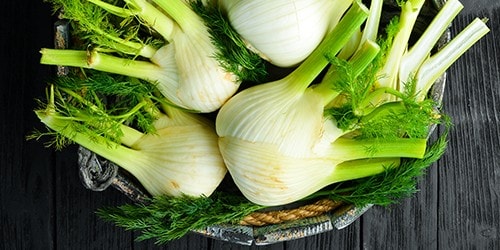
FENNEL:
At its best: July to October
Fennel’s flavour is warm and sweet, with a mild anise or liquorice flavour. Fennel works exceptionally well in soups, stews, and salads due to its punchy taste. If you’re after a sweeter taste, try roasting the fennel bulb with some olive oil, herbs, and spices with some hearty vegetables. It is also a popular ingredient to be used as a base ingredient in meat and fish broths.
Chef Suggestions: Fennel works perfectly as a stand-alone side dish, garnish, or component. You can enjoy fennel finely shaved and combined as a salad. Pair this with olive oil and lemon for an extra boost in flavour.
We recommend: When preparing fennel, cut the bulbs in half and caramelise them with orange. You can try lightly braising or pickling them for a convenient and quick addition to your dish.
Flavour pairings: Firm white oily fish, shellfish, eggs, dill, orange, lemon, saffron, and pear.
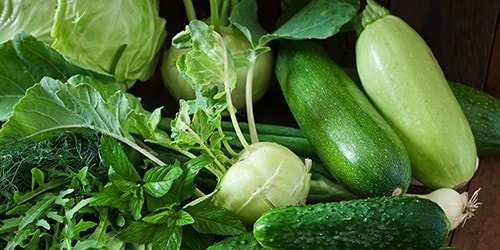
COURGETTE:
At its best: June to October
Courgettes are tender, fresh, and delicate in flavour. They are low in fat and rich in vitamins, minerals, and antioxidants. A true feel-good vegetable! When buying courgettes, look specifically for those which are firm, glossy, and heavy to the touch. They can be served shredded and eaten raw in salads, chargrilled, or roasted with a variety of different flavour profiles. They are popular in pasta, salads, and soups.
Chef Suggestions: Courgettes are great when pan-fried, grilled, or roasted.
We recommend: As a quick salad, grate the courgette and mix it with feta, ground pepper and olive oil. Alternatively, courgettes can be used in sweet tray bakes, cakes, and muffins for a unique dessert.
Flavour pairings: Lemon, cumin, garlic, onions, tomato, olives, scallops, feta, ricotta, and mint.
Fruit
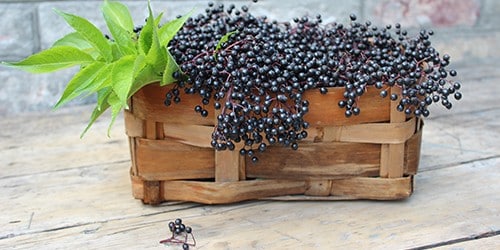
Elderberry:
At its best: July and August
Elderberries are one of the UK’s unsung summer fruits, and can be foraged in gardens and hedgerows from late summer to autumn. While they’re not that tasty eaten raw, cooking or preserving them will unlock their sweet flavour. When cooking with elderberries, always discard the stems as they are slightly toxic. The best way to separate the berries is to run the prongs of a fork through the stems over a bowl.
Chef Suggestions: Elderberries must be cooked before consumption, and their natural bitterness can be enhanced by the addition of sweet spices like cinnamon and nutmeg. In addition to the popular uses of elderberries such as elderflower jam, syrups, and cordials, they can be a delightful addition to drinks and cocktails, such as an Elderberry Kir Royale. Elderberries also lend themselves well to infusing spirits, resulting in delicious creations like Elderberry gin. Elderberry vinegar is a superb choice for salad dressings and sauces.
If you happen to have elderberries that are not fully ripe, you can transform them into wonderful floral elderberry capers by salting them. For added flavour and colour, you can include various spices such as cinnamon sticks, cloves, black peppercorns, fresh chilli, and cardamom pods in each bottle. However, please note that the taste may not be as rich as that of macerated spirits made with other foraged berries.
We recommend: When foraging for produce, ensure that you only pick plump and well-coloured items that are free from bird or other damages. The berries can stain, so use gloves to avoid this. The stems are not palatable so remove before, additionally, remove any green stalks from the fruit.
Flavour profile: Earthy, tart, and sweet (when cooked).
Flavour pairings: They work well with spices and herbs such as cinnamon, black pepper, chilli, cardamom, rosemary. Game, several aged cheeses, oats, barley, quinoa, apple, pears, blackberries, red wine, port, and brandy.
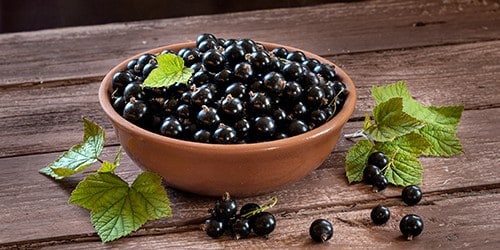
Blackcurrants:
At its best: July and August
Blackcurrants are dark and flavourful currants with a distinct tart taste and a strong aroma reminiscent of hedgerows. They are often used in desserts, jams, and beverages, and are a popular ingredient in British cuisine. Blackcurrants are also rich in nutrients and antioxidants, making them a healthy choice.
Chef Suggestions: Like most tart fruits, blackcurrants benefit from being paired with sweetness, such as sugar or honey, to enhance their palatability in jams, jellies, coulis, sorbets, smoothies, and cocktails. In savoury dishes, they can be used to make sauces for meat dishes or added to salads for a tart burst of flavour.
We recommend: Choose plump and firm blackcurrants with shiny, unbroken skins. To prepare them, simply strip the currants from their stalks and add them raw to fruit salads, as long as they’re not too tart. Alternatively, lightly cook them in a little water with sugar to taste. Be careful not to overcook them, as they may lose their fresh flavour.
Flavour profile: herbal, musky, sour and tart
Flavour pairings: Not surprisingly, like all dark berries, they go well with apples and dairy products such as yoghurt, cream cheese, and ricotta. Peanuts are a wonderful pairing, alongside almonds and hazelnuts. Blackcurrants also complement flavours like chocolate, vanilla, cinnamon, star anise and raspberries. They can also be paired with game meat such as venison and duck.
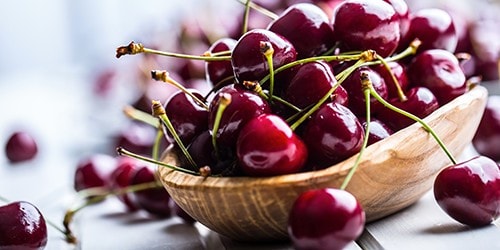
Cherries:
At its best: June and July
Cherries are small, round, juicy fruits that grow on trees in different varieties, including sweet and sour. The colour of the fruit can range from bright red to dark burgundy. Cherries are commonly enjoyed fresh, baked in desserts, or used in jams and sauces. Sweet cherries complement flavours of chocolate, almonds, and vanilla, while sour cherries are often paired with spices such as cinnamon and cloves. They are also commonly used in cocktails and pair well with cheeses such as goat cheese and blue cheese.
Chef Suggestions: Cherries can be enjoyed as a delicious summer snack or a wonderful addition to fruit salads. Before cooking, it is necessary to remove the pits, which can be done using a cherry pitter. Once pitted, cherries can be incorporated into cakes, muffins, and clafoutis, or used to make jam and cherry brandy.
We recommend: Look for plump, shiny cherries with attached stalks. The fruit should have a dark red colour, it’s important to ensure they are firm but not hard. Dark cherries generally have a more acidic taste, while pale cherries tend to be sweeter. It is recommended to taste them before purchasing to determine your preferred flavour.
Flavour profile: Sweet, tangy, and rich.
Flavour pairings: Cream cheese, whipped cream, ice cream, yoghurt, dark chocolate, red/white wine, flaky pastry, balsamic vinegar, dark leafy greens, blueberries, pineapple, almonds, radishes, and lime











